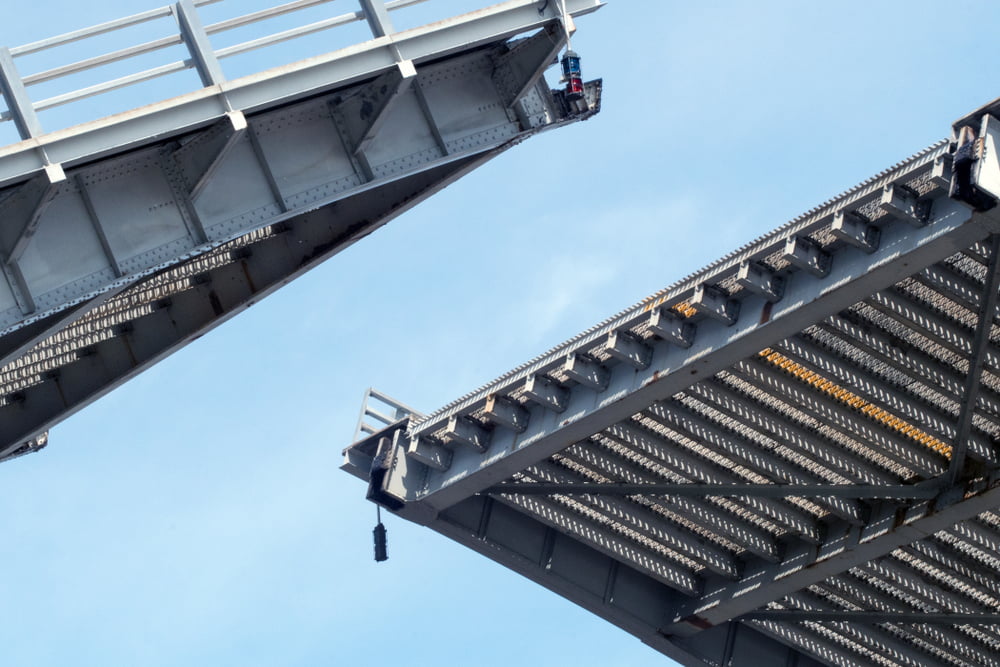More than three years after the Dutch Safety Board published about the fatal accident on the Den Uylbrug in Zaandam, insufficient efforts are still being made to prevent accidents with remotely operated bridges. For example, the safety measures on the Den Uyl bridge have not been directly applied to other bridges in the municipality of Zaanstad. The announced national initiatives to make the remote operation of bridges safer have also not yet been realized.
In response to the report published today 'Safety of remotely operated bridges - Lessons from the accident of the Prince Bernhard Bridge Zaandam', the minister has nevertheless announced that he is exploring the options for improving the safety of movable bridges in the Netherlands. An approach from the national government is necessary: the Dutch Safety Board shows that the problem is not unique to the municipality of Zaanstad, but is a national problem.
On November 28, 2018, an elderly couple was seriously injured on the Prins Bernhardbrug in Zaandam. They stood on the movable part of the bridge when it was opened to shipping. The bridge operator, who was at a distance, had not noticed them on the camera images.
This accident has strong similarities with the accident on the Den Uylbrug over which the Research Council issued a report in 2016. A cyclist stopped in front of the stop line on the bridge because it was opened. However, she did not realize that she was standing on the movable part. The bridge operator, who was at a distance, had not noticed her and opened the bridge. The woman fell over and died.
Seventy two shortcomings identified.
In the report on the Den Uylbrug, the Council made recommendations to the municipality of Zaanstad and to the Minister of Infrastructure & Water Management. The reactions to the recommendations gave the impression that they were being taken up energetically.
The municipality of Zaanstad started with improvement measures for the Den Uyl bridge, such as making the movable part of the bridge visible and placing an attention button. These measures were not structurally applied to other bridges in the municipality. However, the safety risks at the bridges in the municipality were identified. 72 shortcomings were identified.
After identifying these shortcomings, again no general measures were taken to adjust all bridges of the municipality. Instead, it was decided to first identify the risks for each specific bridge. The Prince Bernhard Bridge would be assessed in January 2019.
Urgency improvements have faded.
At the municipality of Zaanstad, the urgency to implement improvements has faded for several reasons. Mapping the safety risks also lost priority. If the identified shortcomings were addressed immediately, the chances of making mistakes in the bridge operation would have been considerably reduced.
Moreover, this had left room for the bridge attendant to be able to correct a mistake he had made. Only after the accident on the Prins Bernhardbrug, the municipal council and the Municipal Executive asked critical questions about the progress of the improvement process and the lack of measures such as making the movable part of the bridge visible.
Missing national standard.
Accidents with remotely operated bridges are not unique to the municipality of Zaanstad. Similar accidents have occurred in various places in the Netherlands. In 2016, the Dutch Safety Board therefore called on the minister to develop a national standard for bridges that are operated remotely. Uniformity in, among other things, the camera setup and control systems reduces the safety risks when operating bridges remotely.
The recommendation has only led to more knowledge sharing within the Water meets Water platform; a platform with a non-binding character. A uniform, national framework for the design, usage requirements and remote control of bridges is still lacking. This while the basis for this has already been laid in the National Bridge and Sluice Standard that applies to bridges of Rijkswaterstaat, the Waterways Directive and in the knowledge from the Water meets Water platform.
Exploration improvement from central government
With the results of the research on the Prince Bernhard Bridge and the previous research on the Den Uyl Bridge, the minister is once again offered an opportunity to give remote control of bridges an extra safety boost.
In response to the report, the minister has indicated that he is prepared to start an exploration of the possibility of improving the safety of movable bridges in the Netherlands from the national government.
The Dutch Safety Board interprets this as an announcement to arrive at a national standard for the design of remotely operated bridges, including the supporting systems. The Council will closely monitor the Minister's initiative and the resulting developments.



